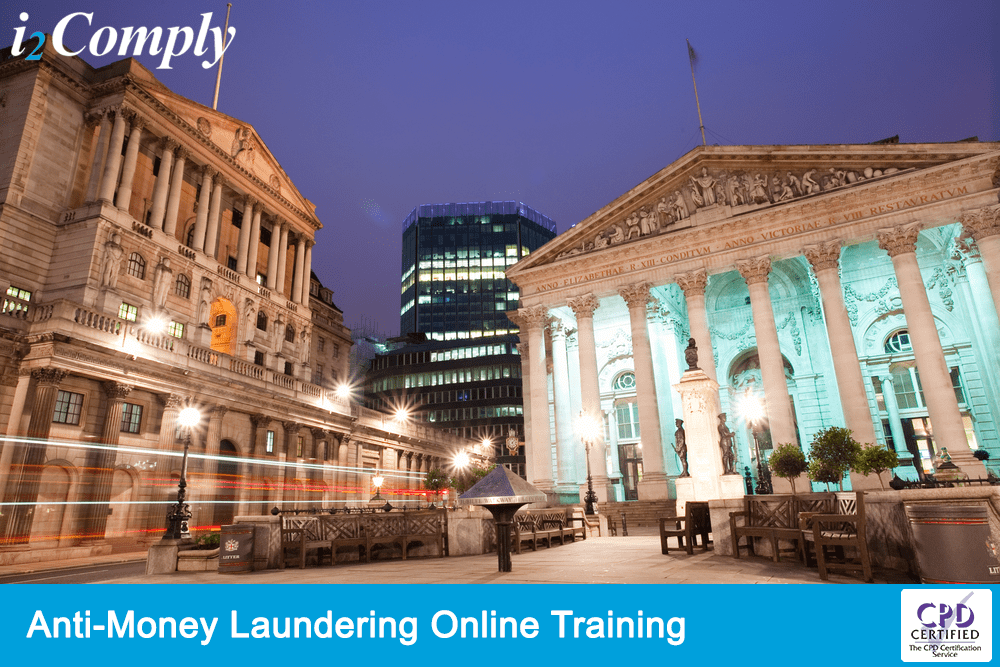Money laundering is one of the most common types of organised crime in the UK. This is, in part, due to globalisation, online banking and cryptocurrencies which have made it easier for criminals to adapt to restrictions and to transfer or withdraw money without detection.
The National Crime Agency estimates that the scale of money laundering in the UK reaches hundreds of billions of pounds annually. Due to the nature of the crime, the actual amount is difficult to determine, but this money funds terrorist activities and threatens the UK’s national security, national wealth and international reputation, which affects all of us.
Our CPD-certified online Anti-Money Laundering training course explains the UK anti-money laundering laws and legislation, and the controls that are put in place to prevent money laundering.
By law, businesses in the regulated sector, such as banks, accountants, estate agents, law firms and casinos, must put controls in place to prevent financial crime and money laundering.
What is money laundering?
Money laundering refers to the process of turning money generated from illegal activities into cash, property or assets that look legitimate. Criminals rely on money laundering to profit from crime such as drug trading, weapon smuggling, kidnapping for ransom, human trafficking, theft, bribery and corruption.
Criminals use a wide variety of money-laundering techniques to make these illegally obtained funds appear legal.
What are the three stages in the money laundering process?
Money laundering usually includes three stages: placement, layering and integration.
1. Placement stage of money laundering

The first stage of money laundering process is placement.
During this placement stage, criminals move cash from its source and integrate the money into a legitimate financial system – financial instruments or bank accounts. Criminals are especially vulnerable in the placement stage as they move large sums of money directly into the financial system. Examples of the placement stage include:
- Placing money into cash-based businesses, such as car washes, beauty salons and casinos, that have little or no variable costs. This is also known as blending of funds as illegal money is blended with legitimate income.
- Creating false invoices by falsely describing goods or services, under-invoicing and over-invoicing.
- Moving small amounts of money at a time is known as ‘smurfing’. Smurfing involves breaking large sums of money into smaller transactions and depositing them into one or more bank accounts.
- Using foreign bank accounts. Criminals transport small amounts of cash abroad and transfer back to the country of origin. This helps to hide the identity of the criminal.
2. Layering stage of money laundering

Layering is the second stage of money laundering. The purpose of this stage is to disconnect the money from the illegal activity that generated it. Launderers create layers by moving money in and out of accounts to make multiple transactions. Therefore, the more layers the money moves through, the harder it is to track the money, which makes the process of linking the funds to the criminal activity very difficult.
Criminals create layers by:
- Purchasing foreign money orders. Criminals convert cash into financial instruments such as money orders, wire transfers, life insurance, stocks, bonds and letters of credit.
- Setting up shell companies. Criminals transfer money electronically to companies that do not run any business operations and have no assets but are documented as legitimate companies. They often disclose limited information while transferring money, which makes it difficult to track. Criminals also use shell companies to protect their identity and assets.
- Gambling. Criminals use illegally obtained money to gamble in casinos. They convert money into chips, then gamble for a short time and cash out chips. This sequence of actions makes the money appear legitimate.
- Placing cash in the stock market. Money launderers place money in the stock market and then transfer it through several different financial products.
3. Integration stage of money laundering

Integration is the final stage in money laundering. In this stage, criminals retrieve the money that was transferred to legitimate sources during layering.
Integration is done very carefully so that criminals can explain where the money has come from and not attract attention from tax authorities or law enforcement. When the illegal money appears to be from a legitimate source, and there is no documentation to prove that the money was obtained illegally, criminals can use the money for any purpose. The tactics that criminals may use for integration involve:
- Paying out false loans. Criminals pay loans to directors, shareholders or themselves through shell companies, which then appears to be a legitimate transaction.
- Investing in assets. Criminals may buy assets, such as high value artwork, jewellery or property to create legitimate sources of income.
- Paying dividends to shareholders of companies controlled by criminals.
How can AML training help to combat money laundering?
Effective anti-money laundering training is essential to ensure that your organisation meets the relevant regulations. Training employees in anti-money laundering helps them to detect suspicious activity and take required action when they suspect fraud. It will also help to reduce the risk of criminals exploiting your business for financial crime.
Finally, effective training reduces the negative impact that money laundering can have on UK’s economy and organisations.
Need regulatory compliance training?
i2Comply supplies multiple CPD-certified online regulatory compliance training courses for all types of workplaces.
- Bribery Act 2010 Online Training Course
- Cyber Security Online Training Course
- Data Protection and the GDPR Online Training Course
- Disability Awareness Online Training Course
- Equality and Diversity Awareness Online Training Course
- Modern Slavery Awareness Online Training Course
- Unconscious Bias Online Training Course
Want further information?
Finally, if you have a question about our training courses, please contact our friendly support team who will be happy to help. You can get in touch at 0333 577 5016 or sales@i2comply.com.




